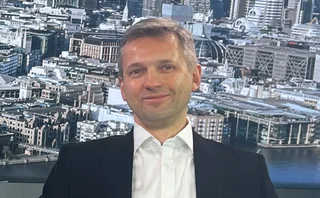
US Treasuries: a venerable market in need of fresh thinking
The world’s most important market has evolved ad hoc; bringing order to it will be no small task
The US issued its first Treasury bonds to pay for the war of independence in the eighteenth century. The first Treasury bill auctions were held almost a century ago, during the Great Depression in 1929. Since those troubled times, US Treasuries have become one of the most liquid and reliable assets in the world.
But that reliability cannot be taken for granted. The past year has seen new stresses in the market, with auctions stumbling as issuance surges. The structure of the market and the mix of participants have changed, with trading technology evolving quickly over the past decade. The sheer dependability of Treasuries, however, combined with the fragmented US regulatory landscape, has meant no-one has ever taken a comprehensive look at how the entire market functions.
Until now. The US Treasury Department is undertaking a wide-ranging review of the market, in co-ordination with federal regulators. But unpicking years of gradual, ad hoc evolution and turning it into something more coherent is a major challenge. The price to pay for any potential mistakes made in such a huge and essential market – which serves as the bedrock for so much financial activity – is high.
On top of that, as with any market, there are competing interests. Non-bank market-makers and high-frequency traders account for a large share of Treasuries trading. They want the market to be more transparent and electronic, but that could hurt dealers, who bid in primary auctions and still handle large bilateral trades with clients.
Buy-side firms want best execution for their investors – transparency helps them to demonstrate that, but too much transparency makes it hard to move large blocks. And the buy side isn’t uniform, ranging from pension funds seeking to match long-term liabilities, to hedge funds looking for arbitrage opportunities.
One potential reform being considered harks back to the regulatory response to the 2008 financial crisis. Central clearing has brought transparency and stability to the over-the-counter derivatives market, and many see it as the way forward for Treasuries. But central counterparties (CCPs) manage risk rather than eliminating it, and they sometimes end up at loggerheads with their clients over margining practices and loss allocation in the event of a member default. In such a large and heavily traded market as US Treasuries, those questions will become even more acute.
There is also talk of widening and diversifying the pool of primary dealers, to smoothe out the turbulence seen at recent bond auctions. But being a Treasuries dealer is not a particularly lucrative activity – its main value lies in the cross-selling opportunities it provides a universal bank. The business could look even less appealing if a usually stable market becomes more volatile, exposing primary dealers to greater risk on a low-return product.
On top of that, the regulatory agencies themselves sometimes seem to be in conflict – or at least, not singing from the same song-sheet. In the wake of the 2008 crisis, the Securities and Exchange Commission was far slower to implement reforms to the derivatives market than the Commodity Futures Trading Commission.
Put it all together, and individual regulators may find it easiest to change the things that are most directly under their own control. For the Federal Reserve, that would mean the creation of a standing repo facility to ensure Treasuries are fully fungible for central bank reserves at short notice. But there would still be plenty of discussion around who can access the facility and on what terms. The Fed may also find itself falling foul of political sensitivities in the US, where central bank liquidity provision is sometimes viewed as unacceptably similar to a fiscal bail-out.
While the idea of a more cogently organised Treasury market makes sense, in practice, it may take a few more nerve-racking auctions to provide enough impetus to drive through meaningful reforms.
Only users who have a paid subscription or are part of a corporate subscription are able to print or copy content.
To access these options, along with all other subscription benefits, please contact info@risk.net or view our subscription options here: http://subscriptions.risk.net/subscribe
You are currently unable to print this content. Please contact info@risk.net to find out more.
You are currently unable to copy this content. Please contact info@risk.net to find out more.
Copyright Infopro Digital Limited. All rights reserved.
As outlined in our terms and conditions, https://www.infopro-digital.com/terms-and-conditions/subscriptions/ (point 2.4), printing is limited to a single copy.
If you would like to purchase additional rights please email info@risk.net
Copyright Infopro Digital Limited. All rights reserved.
You may share this content using our article tools. As outlined in our terms and conditions, https://www.infopro-digital.com/terms-and-conditions/subscriptions/ (clause 2.4), an Authorised User may only make one copy of the materials for their own personal use. You must also comply with the restrictions in clause 2.5.
If you would like to purchase additional rights please email info@risk.net
More on Our take
Podcast: Alexandre Antonov turns down the noise in Markowitz
Adia quant explains how to apply hierarchical risk parity to a minimum-variance portfolio
Why did UK keep the pension fund clearing exemption?
Liquidity concerns, desire for higher returns and clearing capacity all possible reasons for going its own way
UBS’s Iabichino holds a mirror to bank funding risks
Framing funding management as an optimal control problem affords an alternative to proxy hedging
Trump 2.0 bank supervision: simpler but no soft touch?
Republican FDIC vice-chair Travis Hill wants more focus on financial risk instead of process
Lots to fear, including fear itself
Binary scenarios for key investment risks in this year’s Top 10 are worrying buy-siders
Podcast: Alexei Kondratyev on quantum computing
Imperial College London professor updates expectations for future tech
Quants mine gold for new market-making model
Novel approach to modelling cointegrated assets could be applied to FX and potentially even corporate bond pricing
Thin-skinned: are CCPs skimping on capital cover?
Growth of default funds calls into question clearers’ skin in the game








